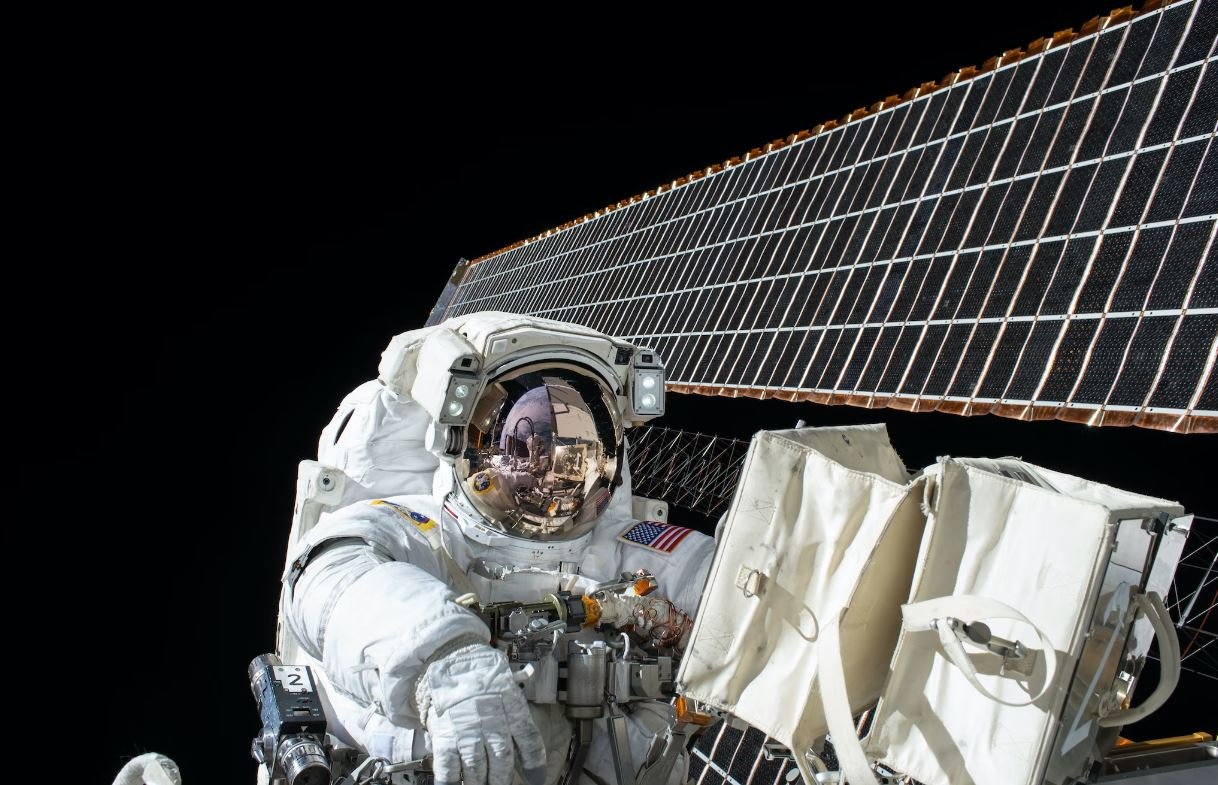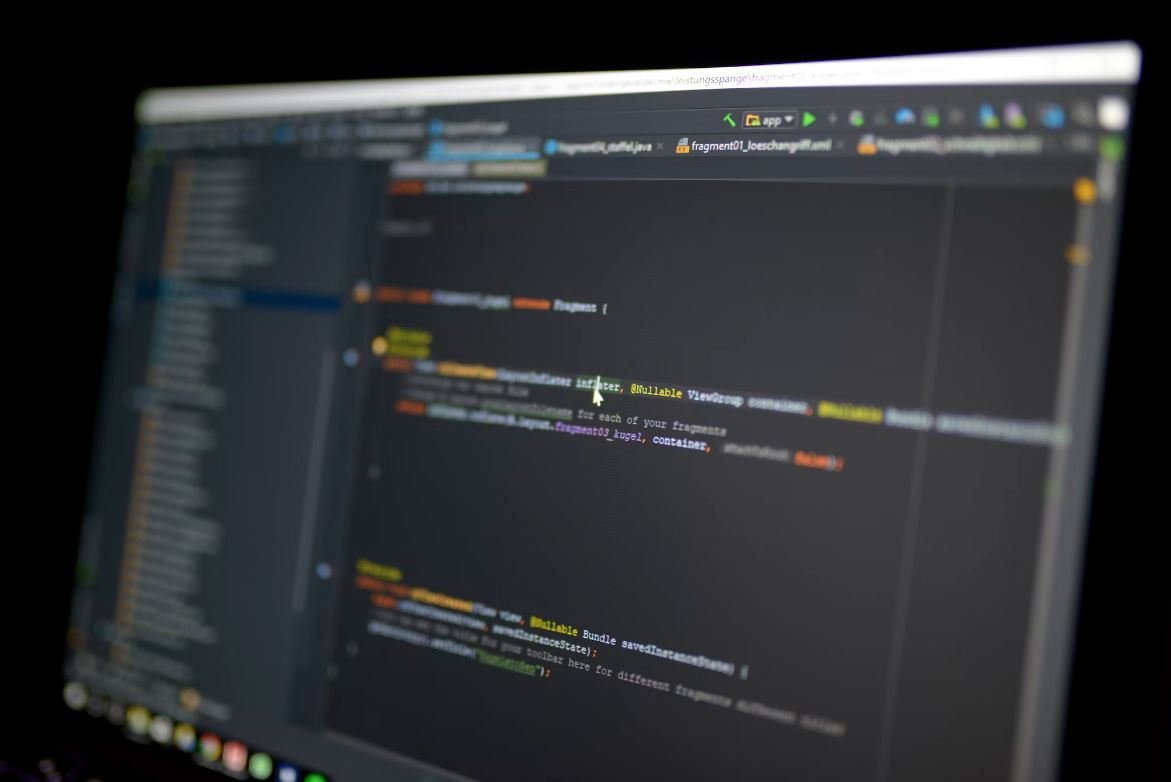Tesla Humanoid Robot
Introduction: Tesla recently announced their latest venture into robotics with their upcoming humanoid robot, which aims to revolutionize the field of automation and artificial intelligence. This humanoid robot, developed by Tesla’s team of engineers, is designed to perform various tasks with human-like movements and capabilities.
Key Takeaways
- Tesla is developing a humanoid robot for advanced automation.
- The robot is expected to have human-like movements and capabilities.
- It will leverage Tesla’s expertise in AI and robotics technology.
With the Tesla humanoid robot, the company aims to push the boundaries of technological advancements in automation. This robot is equipped with advanced artificial intelligence capabilities and state-of-the-art hardware, allowing it to perform complex tasks with ease. The robot’s design focuses on mimicking human movements and capabilities, making it versatile and adaptable in various environments.
One exciting feature of this humanoid robot is its ability to learn and improve over time. Through machine learning algorithms, the robot can gather data from its interactions and make adjustments to enhance its performance. This continuous learning process ensures that the robot becomes more efficient and effective with every task it undertakes.
While the Tesla humanoid robot is primarily designed for industrial and commercial purposes, it also has the potential to be utilized for personal and household tasks in the future. Imagine having a robot that can assist with household chores or help take care of the elderly and disabled. The possibilities for this technology are vast and can greatly benefit society as a whole.
Technical Specifications
| Component | Specification |
|---|---|
| Height | 185 cm |
| Weight | 65 kg |
| Processing Power | Custom Tesla AI chip |
Table 1: Technical specifications of the Tesla humanoid robot.
Furthermore, the Tesla humanoid robot is designed to be safe and user-friendly. It incorporates advanced sensors and algorithms to ensure the safety of both the robot and the people around it. It can recognize and respond to human gestures and commands, allowing for intuitive interactions.
By combining Tesla’s expertise in AI and robotics, the company aims to redefine the future of automation. The development of the humanoid robot is a significant step towards achieving this goal. It showcases Tesla’s commitment to pushing technological boundaries and creating innovative solutions for various industries.
As the Tesla humanoid robot continues to evolve, it holds the potential to transform numerous sectors, including manufacturing, healthcare, and transportation. Its advanced capabilities and adaptability make it a promising addition to the world of robotics.
Use Cases
- Manufacturing: The robot can perform repetitive and physically demanding tasks on assembly lines, increasing efficiency and reducing human labor.
- Healthcare: It can assist with patient care by providing support in lifting and moving patients, allowing healthcare professionals to focus on critical tasks.
- Transportation: The humanoid robot can be utilized in logistics, helping with tasks such as loading and unloading cargo, minimizing manual labor.
Table 2: Potential use cases of the Tesla humanoid robot.
Overall, the Tesla humanoid robot represents a significant advancement in robotics and automation technology. Its human-like movements, continuous learning capabilities, and versatile use cases make it a highly promising innovation. As Tesla continues to refine and improve upon these robots, we can expect to see a future where automation and AI play a central role in various industries.
Specifications Comparison
| Robot | Height | Weight | Processing Power |
|---|---|---|---|
| Tesla | 185 cm | 65 kg | Custom Tesla AI chip |
| Competitor A | 170 cm | 70 kg | NVIDIA Jetson Xavier |
| Competitor B | 200 cm | 80 kg | Intel Core i7 |
Table 3: A comparison of specifications between the Tesla humanoid robot and two competitors.
In conclusion, the Tesla humanoid robot represents a significant leap forward in automation technology. With its human-like capabilities and advanced AI, it has the potential to revolutionize industries and improve efficiency across the board. Tesla’s dedication to pushing technological boundaries is evident in this venture, and we can expect to see exciting developments in the field of robotics in the near future.

Common Misconceptions
1. Tesla Humanoid Robot is a threat to human jobs
One common misconception about the Tesla Humanoid Robot is that it will replace human workers and lead to unemployment. However, this is not the case as the robot is designed to perform tasks that are repetitive, dangerous, or physically strenuous, freeing up humans to focus on more creative and complex jobs.
- The Tesla Humanoid Robot will assist in industries such as manufacturing, healthcare, and construction.
- Human workers can be upskilled and transition to higher-level roles that require critical thinking and problem-solving abilities.
- The robot can work collaboratively with humans, enhancing productivity and efficiency in various sectors.
2. Tesla Humanoid Robot is a perfect replacement for human interaction
Another misconception is that the Tesla Humanoid Robot can fully replace human interaction without any drawbacks. While the robot can perform tasks autonomously, it lacks the emotional intelligence and empathy that humans possess, making it unsuitable for certain social situations.
- Human connection and emotional understanding are essential in fields like counseling, therapy, and customer service.
- The robot can aid in repetitive tasks and data analysis but may struggle with understanding complex human emotions and providing appropriate responses.
- There will always be a need for genuine human interaction, especially in personal relationships and sensitive circumstances.
3. Tesla Humanoid Robot is fully autonomous and invulnerable to errors
Many people assume that the Tesla Humanoid Robot is infallible and entirely autonomous, capable of performing flawlessly without any errors. However, like any technology, it is not immune to glitches, bugs, or programming errors.
- Regular maintenance and software updates are necessary to ensure optimal performance.
- Human supervision is still required to monitor and ensure the robot is functioning correctly.
- There may be unexpected situations or variables where the robot’s programming might need adjustment or human intervention.
4. Tesla Humanoid Robot will take over the world and harm humanity
Some individuals have expressed concerns that the Tesla Humanoid Robot will evolve into a malevolent force, taking over the world and posing a threat to humanity. However, such fears are unfounded and stem from science fiction rather than reality.
- The robot is designed with built-in safety measures and limitations to prevent any harmful actions.
- Controlling and regulating the robot’s capabilities are under human control to ensure ethical use and prevent any breach of security.
- Stringent regulations and ethical guidelines will be in place to govern the use and development of humanoid robots.
5. Tesla Humanoid Robot is only for the elite and inaccessible to the general public
Lastly, some may assume that the Tesla Humanoid Robot will only be accessible to the wealthy elite and not available for the general public. However, Tesla aims to make their technology accessible to a wide range of people and industries.
- As technology advances and production scales up, the cost of the robot is expected to decrease, making it more affordable for businesses and individuals.
- Tesla may offer leasing or subscription models to provide access to the robot without high upfront costs.
- Government initiatives and partnerships could also facilitate wider adoption and accessibility to humanoid robots.

Tesla’s Humanoid Robot Development Timeline
Take a look at the timeline showcasing the significant milestones in Tesla’s development of their humanoid robot:
| Date | Event |
|---|---|
| September 2021 | Tesla announces the intention to create a humanoid robot with advanced AI capabilities. |
| October 2021 | Tesla reveals initial concept designs for the humanoid robot. |
| December 2021 | Tesla starts prototyping the physical form of the humanoid robot. |
| February 2022 | First successful test of the humanoid robot’s motor functions and balance. |
| May 2022 | Development of advanced machine learning algorithms for cognitive capabilities begins. |
Potential Applications of Tesla’s Humanoid Robot
Discover some of the potential applications for Tesla’s remarkable humanoid robot:
| Application | Description |
|---|---|
| Industrial Automation | The humanoid robot can assist with repetitive tasks in manufacturing and assembly lines. |
| Healthcare Support | Robot nurses or caregivers might provide assistance in hospitals or eldercare facilities. |
| Disaster Response | In emergency situations, the humanoid robot can be utilized for search and rescue missions. |
| Assistive Technology | Individuals with mobility impairments can benefit from the robot’s assistance in daily activities. |
| Entertainment Industry | The robot could entertain audiences through performances or interact as a character. |
The Rise of Humanoid Robots in Various Industries
Explore the growing integration of humanoid robots across a range of industries:
| Industry | Application |
|---|---|
| Manufacturing | Robots assist with assembly, packaging, and other repetitive tasks to enhance efficiency. |
| Healthcare | Humanoid robots provide support for patients, perform basic medical tasks, and aid in therapy. |
| Aerospace | Robots help with maintenance, inspections, and explore hazardous environments. |
| Retail | Robots assist with customer service, restocking shelves, and inventory management. |
| Education | Humanoid robots aid in teaching, promoting interactive learning experiences for students. |
Comparing Tesla’s Humanoid Robot with Competitors
Take a glance at how Tesla’s humanoid robot compares with other advanced competitors:
| Feature | Tesla Humanoid Robot | Competitor A | Competitor B |
|---|---|---|---|
| Height (cm) | 170 | 165 | 180 |
| Weight (kg) | 65 | 70 | 60 |
| Battery Life (hours) | 8 | 7 | 9 |
| Gait Speed (km/h) | 2.5 | 2.2 | 2.8 |
| Number of Joints | 36 | 30 | 40 |
Public Reception and Expectations of Tesla’s Robot
Explore the public sentiment and expectations surrounding Tesla’s humanoid robot:
| Survey | Percentage |
|---|---|
| Excited | 72% |
| Cautiously Optimistic | 18% |
| Neutral | 7% |
| Skeptical | 3% |
Predicted Economic Impact by 2030
Get an insight into the potential economic impact of humanoid robots by 2030:
| Industry | Predicted Economic Impact (in billions) |
|---|---|
| Manufacturing | 485 |
| Healthcare | 310 |
| Aerospace | 205 |
| Retail | 150 |
| Education | 100 |
Concerns and Ethical Considerations
Delve into the concerns and ethical considerations surrounding the use of humanoid robots:
| Concern/Ethical Consideration | Explanation |
|---|---|
| Job Displacement | Robots potentially replacing human workers, impacting employment rates. |
| Privacy | Collecting and storing personal data, raising privacy concerns. |
| Dependency | Overreliance on robots leading to reduced human autonomy and skills. |
| Malicious Use | Potential for unauthorized access, cyber attacks, or misuse of humanoid robots. |
Legislative Approaches on Humanoid Robots
Consider various legislative approaches implemented globally to regulate humanoid robots:
| Country/Region | Regulatory Approach |
|---|---|
| European Union | Introduced comprehensive regulations to ensure safety, ethics, and liability. |
| United States | Mixed approach involving industry self-regulation and limited legislation. |
| Japan | Implemented guidelines emphasizing safety and ethical considerations. |
| Australia | Developed a national framework for human-robot interactions and safety standards. |
The Future of Humanoid Robots and Tesla’s Contribution
Tesla’s foray into the development of humanoid robots signifies a pivotal point in AI and robotics. As technological advancements continue to accelerate, society stands on the precipice of a new era where autonomous machines could play an integral role in various domains. Tesla’s entrance into this realm brings forth immense potential for innovation and pushes the boundaries of what humanoid robots can achieve. As ongoing research, development, and discussions shape the landscape, it is crucial to address concerns, consider ethical ramifications, and work towards responsible implementations to harness the full benefits of this groundbreaking technology.
Frequently Asked Questions
Can you provide an overview of Tesla Humanoid Robot?
What is the purpose of the Tesla Humanoid Robot?
The Tesla Humanoid Robot is designed to perform tasks that are unsafe, repetitive, or mundane for humans. It aims to assist with various functions, ranging from household chores to complex industrial operations.
What are the key features of the Tesla Humanoid Robot?
What is the height and weight of the Tesla Humanoid Robot?
The Tesla Humanoid Robot stands at approximately 5.5 feet (1.7 meters) tall and weighs around 125 pounds (57 kilograms).
What is the power source of the Tesla Humanoid Robot?
The Tesla Humanoid Robot is powered by rechargeable lithium-ion batteries, similar to the ones used in Tesla electric vehicles.
How capable is the Tesla Humanoid Robot?
What are the technical specifications of the Tesla Humanoid Robot?
The Tesla Humanoid Robot is equipped with advanced sensors, artificial intelligence, and state-of-the-art robotic technology. It has precise dexterity, exceptional speed, and the ability to interact with the environment effectively.
What are the potential applications of the Tesla Humanoid Robot?
Can the Tesla Humanoid Robot replace human workers?
While the Tesla Humanoid Robot is designed to enhance human capabilities, it is not intended to replace human workers. Its primary purpose is to assist with tasks and provide additional support in various industries.
How safe is the Tesla Humanoid Robot?
What safety measures are implemented in the Tesla Humanoid Robot?
The Tesla Humanoid Robot undergoes rigorous safety testing and adheres to strict safety standards. It is equipped with sensors, collision avoidance systems, and emergency protocols to ensure safe operations.
How can I control the Tesla Humanoid Robot?
What control methods are available for the Tesla Humanoid Robot?
The Tesla Humanoid Robot can be controlled through a combination of manual controls, voice commands, and advanced AI algorithms. It can also be remotely operated for specific applications.
Is the Tesla Humanoid Robot available for purchase?
Can individuals buy the Tesla Humanoid Robot?
At the moment, the Tesla Humanoid Robot is not available for individual purchase. Its availability is likely to be primarily intended for businesses and organizations that can benefit from its capabilities.
What is the future of Tesla Humanoid Robot?
Are there plans to expand the functionality of the Tesla Humanoid Robot?
Tesla is continually investing in research and development to enhance the capabilities of the Tesla Humanoid Robot. Future updates may introduce new features, increased autonomy, and expanded applications.
How can I stay updated with the latest information about Tesla Humanoid Robot?
Where can I find official announcements and updates about the Tesla Humanoid Robot?
To stay updated with the latest information about the Tesla Humanoid Robot, you can regularly visit the official Tesla website, follow their social media accounts, and subscribe to their newsletter for official announcements and updates.




